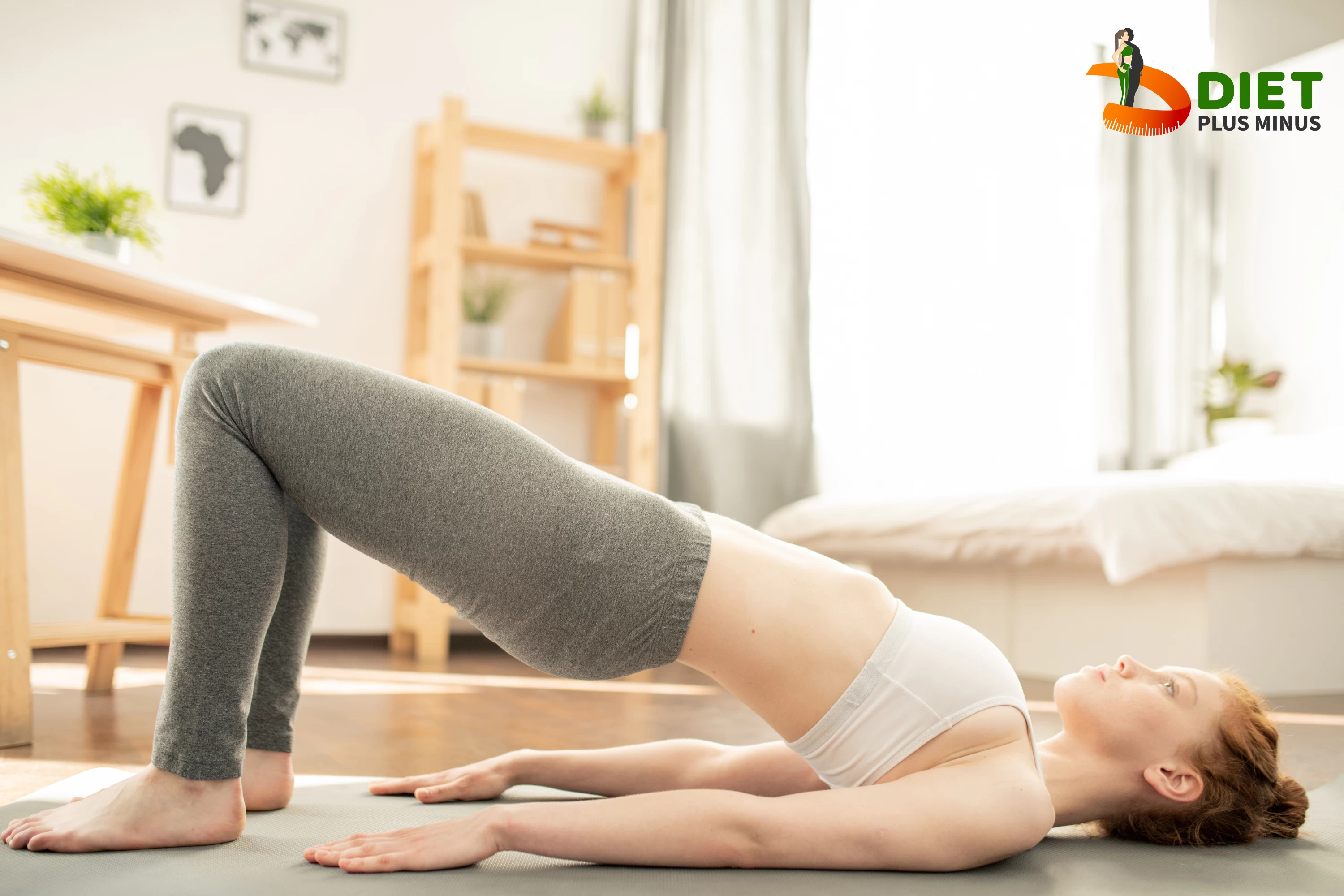Glutes: Glute Bridge

Glute Bridge
Glute bridges strengthen glutes and core. This simple exercise works the hamstrings, glutes, and core. Start this exercise with your back on the floor or mat. Kneel and plant your feet hip-distance apart. Lift your hips as high as possible by pressing through your heels and engaging your core. Squeeze your glutes for several seconds at the top of the bridge position before slowly returning to starting position. Avoid excessive low back arching and joint misalignment during this exercise. This will maximise exercise benefits and reduce injury risk.
Benefits: Strength & Stability
Glute Bridge strengthens and stabilises glutes. This exercise stabilises and strengthens glutes, hamstrings, and core muscles. To challenge yourself, try the Glute Bridge with or without weight. These key muscles improve lower body control, improving running, jumping, squatting, and more. Strengthening your glutes helps support your body during forceful exercises, reducing injury risk.
Isometric holds at the top of the Glute Bridge improve hip stability. This activates all three gluteal muscles (maximus, medius, minimus) and tightens your hips, making them more resistant to gravity and impact from running or jumping. This hip stability improves athletic performance and posture when standing or sitting. Walking on an uneven surface or carrying heavy loads with one arm while maintaining good posture are easier with a stable base.
Form: Correct Technique
Glute bridges strengthen and stabilise glutes. Start by lying on your back with your feet hip-width apart. Bend your knees and lift your hips until they form a straight line with your shoulders and knees. Squeeze your glutes as you raise them, then slowly lower them until you're almost touching the ground before repeating. Each repetition, keep all four corners of both feet on the ground. When doing this exercise, try to keep your upper back as straight as possible while squeezing your glutes.
Progressions: Increase Difficulty
After mastering the glute bridge, there are several ways to increase difficulty and strength. Weightlifting is one way. Hold a weight plate or dumbbell on your hips or have someone else do it. Elevating your feet also works the glutes harder. Single-leg glute bridges isolate each glute and add balance. Finally, pulse reps at the top of each rep challenge muscles to fatigue quickly. These progressions build glute strength to boost your workouts!
Variations: Different Movements
Glute workouts include the glute bridge. It strengthens, stabilises, and mobilises glutes. Each glute bridge variation has its own benefits.
Single-leg glute bridges exist. This variation is harder than a two-legged bridge because you must lift one leg off the floor. Lifting one leg requires balance, stability, and core and hip muscle engagement. The single-leg variation targets each side of your butt separately, improving symmetry.
Another variation is adding pulses at different angles, such as doing mini bridges in a clockwise or anticlockwise direction for 30 seconds throughout your set. This challenges your butt from all angles. This will increase hip flexibility and strength.
Muscles Targeted: Glutes
Glute bridges work glutes well. It requires lying on your back with your feet flat and knees bent. Squeeze your glutes as you slowly lift your hips off the floor to form a straight line from shoulders to knees. This exercise targets gluteus maximus, minimus, hip abductors, and external rotators. It strengthens lower back and hamstrings, improving posture and balance. It also stretches and strengthens tight muscles to relieve pain. It's great for glutes and other important muscle groups that support walking and running.
Conclusion
Glute Bridges target glutes and build strength. For more difficulty, add weight. This exercise requires proper form to activate muscles and avoid injury. Single-leg bridges and resistance bands can also challenge the muscles and help progress to more advanced exercises. Running, jumping, squatting, and everyday activities like walking up stairs require glute training and strengthening.
If you want to improve performance, daily life, and health/fitness, you must regularly train your glutes with exercises like the Glute Bridge. Maintaining consistent effort over time by gradually increasing difficulty or changing your routine is as important as proper form. This ensures lifelong glute strength!
In Short:
Steps involved:
-
Lie down with your knees bent keeping your feet flat on the floor.
-
Keep your back straight and push up your hips so that your butt is elevated.
-
Tense your glutes and raise your hips towards the ceiling.
-
Once you are at the apex, pause for a few seconds and then slowly return back to the starting point. Repeat.
Do’s:
-
Ensure that the lower back doesn’t arch as you extend the hips.
-
Always keep your knees and shoulders in a straight line at the peak of the contraction.
Don’ts:
-
Don’t involve any of your lower back at all.
-
Don’t move your head while performing the exercise.
